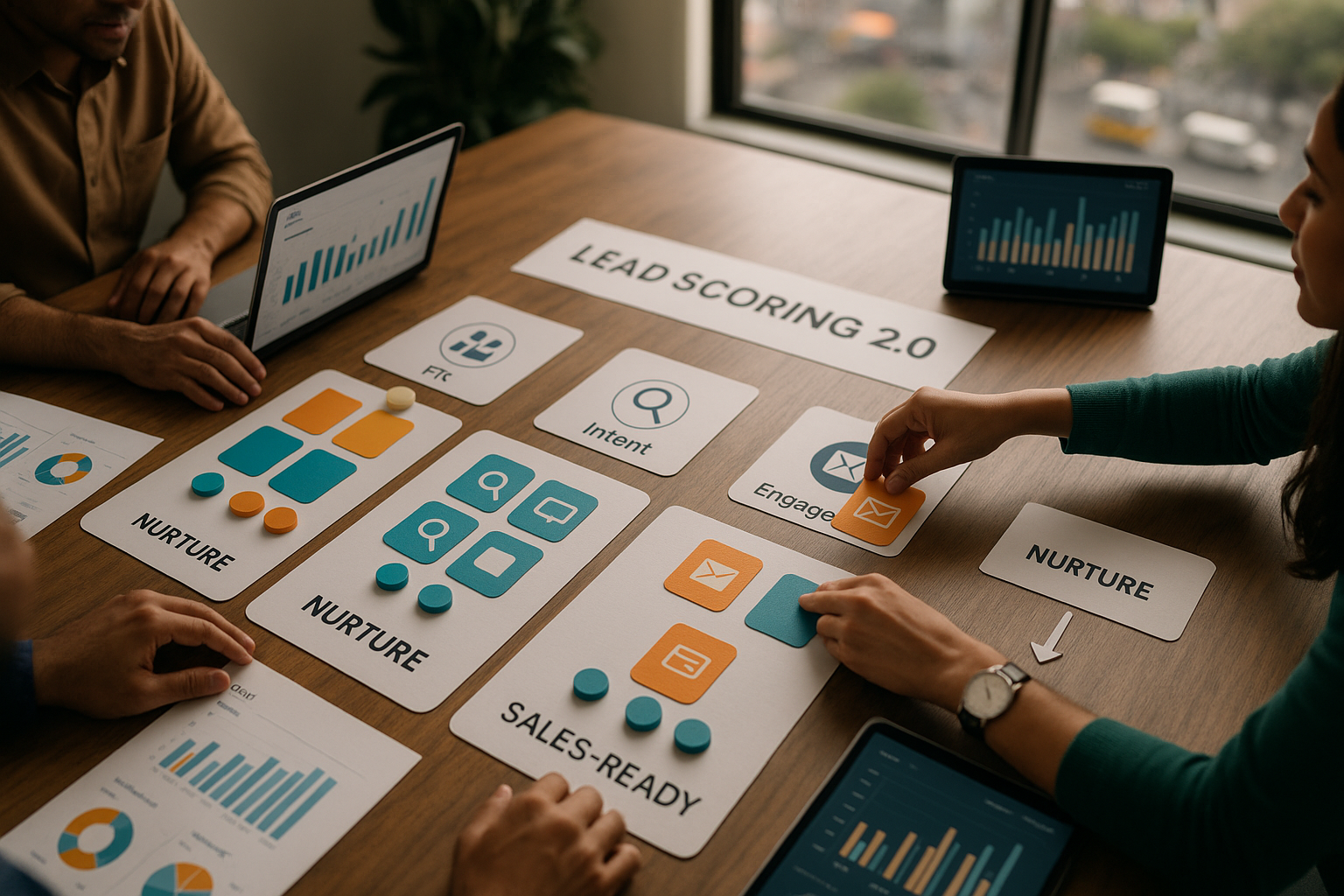In today’s competitive B2B landscape, one-size-fits-all email campaigns no longer deliver results. Buyers expect personalized, relevant, and timely communication at every touchpoint. This is where AI powered email automation for B2B lead gen is rewriting the playbook. By combining generative AI with behavior-triggered workflows, companies can send messages that adapt in real time to a lead’s actions — improving open rates, nurturing journeys, and ultimately, conversions.
Why Generative AI Matters for B2B Email Marketing
B2B decision-makers now consume multiple digital touchpoints before engaging with sales. Cold outreach or static drip campaigns often fail because they ignore the unique buying signals of each lead. Generative AI behavior triggered email workflows solve this problem by:
- Monitoring user actions (website visits, content downloads, webinar attendance).
- Automatically generating the next best email message.
- Adjusting subject lines, copy, and CTAs to match buyer intent.
Instead of generic nurturing, personalized AI email campaigns for enterprise sales respond to real-time behavior. For example, if a CTO downloads a whitepaper on “Cloud Security,” the AI system can instantly draft a follow-up email highlighting case studies on enterprise cloud adoption.
The Shift to Behavior-Triggered Email Sequences
Traditional automation tools rely on static conditions: “If a lead opens an email, send X after 2 days.” That approach feels robotic and often irrelevant. Modern generative AI behavior triggered email workflows go further by predicting context and creating adaptive messaging.
Examples include:
- Abandoned demo sign-up → AI generates a persuasive reminder email tailored to that lead’s role (CIO vs. Marketing Head).
- Multiple visits to pricing page → AI drafts a personalized offer highlighting ROI, relevant case studies, or scheduling a consultation.
- Engagement drop-off → AI creates a re-engagement email with value-driven content instead of discounts.
By letting algorithms adjust tone, length, and value proposition, these campaigns feel human and consultative — the qualities modern buyers expect.
How AI Powered Email Automation for B2B Lead Gen Works
Successful companies deploy AI powered systems that connect marketing automation platforms (HubSpot, Marketo, Salesforce) with generative AI engines.
The process typically involves:
1. Data Capture – Collect intent signals from website analytics, CRM, and marketing campaigns.
2. Segmentation – Group leads by industry, role, buying stage, and engagement behavior.
3. Generative AI Copywriting – Create personalized subject lines, introductions, and body text for each scenario.
4. Automated Testing – Run A/B variations instantly to identify the highest-converting sequences.
5. Behavior Feedback Loop – AI learns from every response to refine tone, content, and cadence.
This loop ensures that AI powered email automation for B2B lead gen continuously improves while reducing manual effort.
Benefits of Generative AI in Enterprise Sales Emails
For enterprises where deal cycles are long and complex, personalized outreach is critical. Personalized AI email campaigns for enterprise sales offer measurable advantages:
- Higher Engagement: Dynamic subject lines and AI-optimized CTAs boost open and click-through rates.
- Shorter Sales Cycles: Leads receive timely, relevant content that helps them progress faster through the funnel.
- Reduced Human Error: AI ensures consistency while freeing sales teams to focus on high-value conversations.
- Scalability: AI can handle thousands of prospects simultaneously, maintaining a human-like tone.
Case studies show that companies implementing generative AI behavior triggered email workflows often see a 20–30% improvement in MQL-to-SQL conversions.
Best Practices for AI-Driven Email Sequences (Aligned with Google’s Helpful Content Update)
To maximize performance and stay aligned with the latest Google updates, B2B marketers should focus on:
1. Value Over Volume: Don’t over-automate. Ensure every AI-generated email provides genuine value.
2. EEAT Compliance: Add credibility with author bios, cited sources, and case examples to reinforce expertise.
3. Human Oversight: AI drafts, but humans should review for brand voice and compliance (GDPR, HIPAA).
4. Content Depth: Use AI to generate detailed insights, not just surface-level templates. Google rewards depth.
5. Continuous Optimization: Leverage AI to test subject lines, CTAs, and timing based on user intent.
By following these practices, marketers align with Google’s focus on helpful, people-first content while still scaling outreach.
The Future of AI Powered Email Automation in B2B
The next evolution of AI powered email automation for B2B lead gen will integrate even deeper with account-based marketing (ABM) and predictive analytics. Imagine AI generating an email sequence that not only reacts to a prospect’s behavior but also predicts what they’ll need next quarter based on industry trends.
As enterprises demand personalized AI email campaigns for enterprise sales, the winners will be companies that combine human creativity + AI scalability. Rather than replacing marketers, AI acts as a co-pilot that ensures every lead receives the right message at the right time.
Conclusion
In B2B marketing, personalization is no longer optional — it’s the backbone of conversion. By implementing generative AI behavior triggered email workflows, companies can move from static, guess-based campaigns to adaptive, intelligent nurturing that drives real ROI.
If you’re looking to accelerate your pipeline, it’s time to adopt AI powered email automation for B2B lead gen and start building personalized AI email campaigns for enterprise sales that actually convert.
They are automated email sequences that use generative AI to create messages based on real-time buyer actions—like page visits, content downloads, or webinar attendance—so every email is timely, relevant, and tailored to intent.
Signals from analytics, CRM, and marketing platforms feed an AI engine. The AI segments audiences, drafts subject lines and copy, runs rapid A/B tests, and learns from engagement to refine cadence, tone, and CTAs automatically.
Static drips follow fixed rules and ignore context. Generative AI predicts needs and adapts copy per role, stage, and behavior—improving opens, click-throughs, and conversion while feeling more human and consultative.
Most teams connect an MA/CRM (e.g., HubSpot, Marketo, Salesforce) with an AI copy/decision engine via APIs. Data capture, segmentation, content generation, testing, and analytics should be integrated for a closed feedback loop.
Typical gains include higher engagement from dynamic subject lines and CTAs, faster deal progression due to timely content, fewer manual errors, and scalable personalization. Many teams report 20–30% lifts in MQL-to-SQL conversions.



